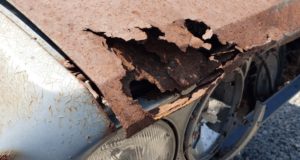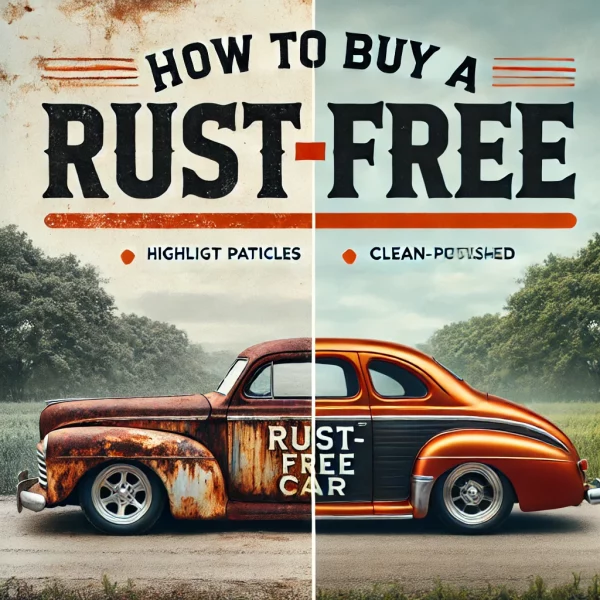How to Buy a Rust-Free Car
If you’re dreaming of a rust-free car, your chances improve significantly when shopping in rust-free climates like California, USA. However, for vehicles over 10 years old—especially classics—the odds of finding one without rust shrink considerably. Nevertheless, with the right approach, you can identify rust and corrosion without dismantling the car on the seller’s driveway.
Let’s break it down step by step.
Do Your Research
To begin with, avoid making impulse purchases when hunting for a second-hand or classic car. Instead, start by researching your preferred make and model. For instance, running an online search like “Lancia Beta 1974 rust problems” (be warned: this example may crash your PC) will uncover common corrosion issues.

Additionally, for cars less than 20 years old, online reviews and forums often reveal patterns of recurring problems. Meanwhile, if the vehicle is older, check for dedicated car clubs or forums. These communities are excellent resources, offering insights from enthusiasts who know exactly where rust tends to develop on these models. Ultimately, thorough research ensures you’re better prepared when it’s time to inspect the car.
How to Check for Rust and Corrosion
Spotting Exterior Rust
When inspecting the car, start with the bodywork. For minor surface rust along edges, there’s no need to worry—this can usually be repaired easily. However, bubbling beneath the paint is a more serious concern. These bubbles can hide significant corrosion or holes requiring welding.
Key Areas to Inspect
To ensure you don’t miss critical spots, examine these areas closely:
- Sills (beneath the doors):
Look for bubbling or cracks, and press gently. If you hear a crackling sound, it’s likely a rust hole. - Door Bottoms and Pillars:
Open the doors and inspect the bottom edges for rust. Push the door pillars; any movement or crunching indicates corrosion. - Wheel Arches:
Feel behind plastic liners for trapped dirt or moisture, as these can promote rust. - Underneath the Car:
Scrape any flaky rust. While solid metal beneath is fine, layered corrosion requires further investigation. Don’t forget to inspect suspension mounts for rust.
Bodywork and Repairs
Checking Panel Alignment
Next, assess the panel alignment. Even shut lines—those gaps between panels—are a good sign, while uneven gaps or misaligned panels could indicate poor crash repairs. When viewed from the side, the car’s body should appear smooth and straight.
Signs of Filler Use
Moreover, it’s important to check for body filler. Here are a few ways to spot it:
- Feel the edges: Steel edges are thin and sharp (around 1.5mm). Thick, rounded edges usually mean filler.
- Use a small magnet: It won’t stick to filler but will adhere to steel.
- Tap the panels: Steel produces a hollow, ringing sound, while filler sounds dull and solid.
Crash Damage Clues
Don’t overlook subtle signs of past crash repairs. For instance, examine the spare wheel well for hammer marks. While well-repaired damage isn’t a deal-breaker, poorly executed fixes—especially on classics—demand caution. Also, check concealed areas, like behind the headlights, for signs of deformation.
Is Filler Always a Deal-Breaker?
Surprisingly, filler doesn’t automatically mean you should walk away. For classic cars, minor filler repairs in rust-prone areas—such as door bottoms or wheel arches—can be acceptable if the car is otherwise in good condition.
On the other hand, for modern vehicles or high-value cars, any filler is a red flag. In such cases, it’s better to move on, as reputable dealers should not sell cars with these flaws.
A Digital Vehicle Check
In recent years, digital vehicle history reports have become increasingly accessible. With over 20% of cars on the road having been damaged, this service can be invaluable. For a small fee, these checks provide:
- Details about previous owners, accidents, theft, and mileage records.
- Photos of the vehicle’s past condition.
- Maintenance and service history records.
This additional step ensures you’re fully informed before making a purchase.
Final Advice
Ultimately, whether you’re a DIY expert or prefer professional repairs, aim to buy the best car your budget allows. Rust often signals neglect in other maintenance areas. Remember: there’s always another car in better condition waiting to be discovered.
With these tips in mind, you’re far less likely to end up with a dud.
About Rust.co.uk
At Rust.co.uk, we’ve spent over 25 years helping car enthusiasts tackle rust problems. From our award-winning Rustbuster EM121 Epoxy Mastic to expert advice, we’re here to help you protect your investment.
Do it right, do it once.
All the best,
Rusty




